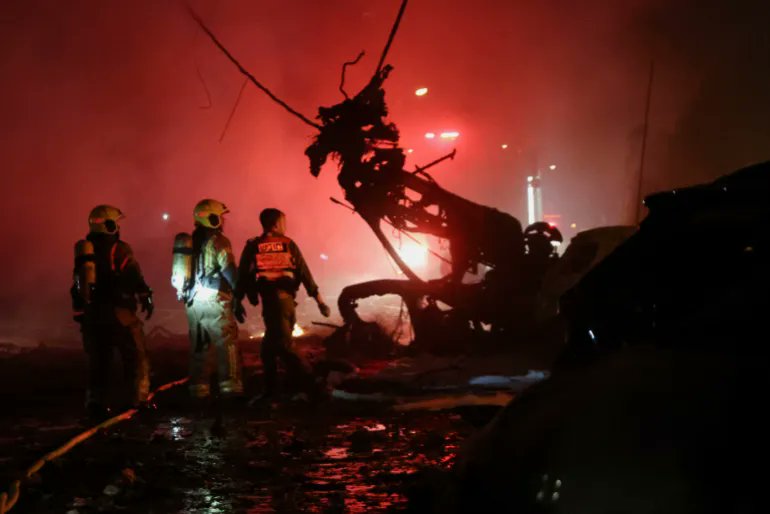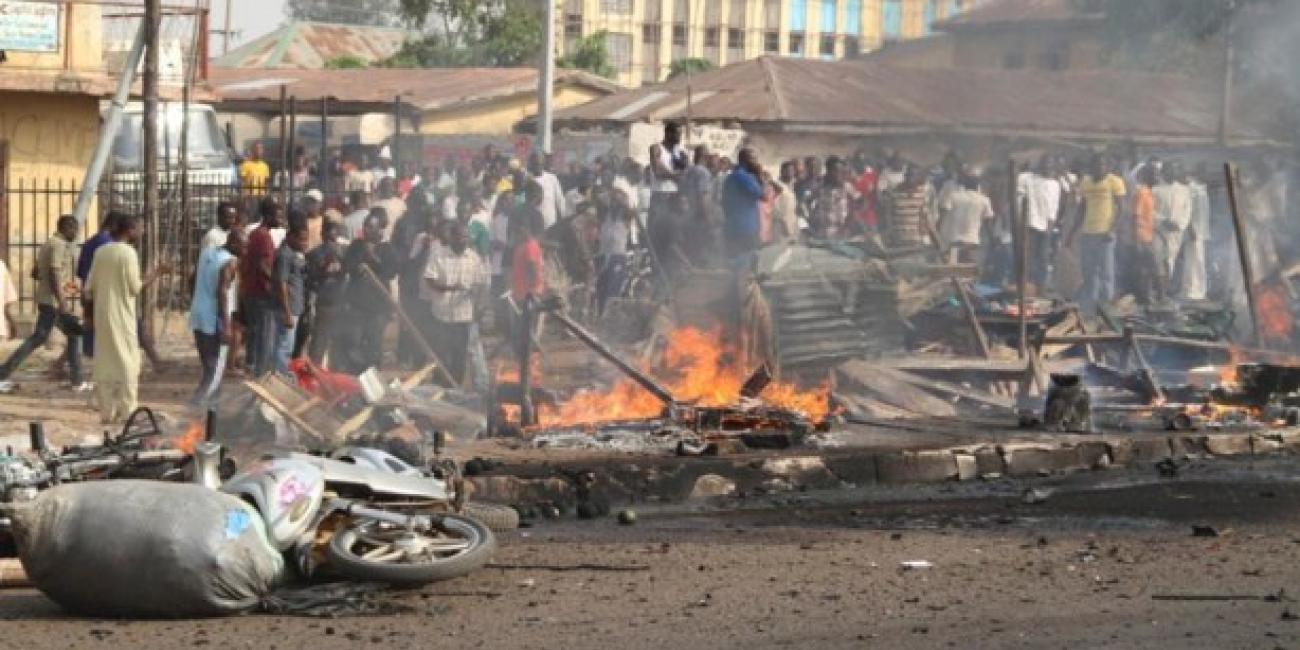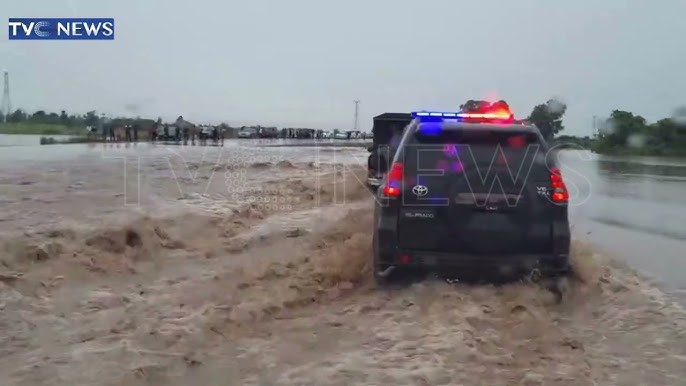On Monday, June 16, 2025, Iran unleashed a significant wave of ballistic missile attacks on Israel, marking the fourth day of an intensifying conflict between the two nations. The Israel Defense Forces (IDF) reported that the barrage began early Monday morning, triggering air raid sirens across major cities, including Tel Aviv, Jerusalem, Haifa, and Petah Tikva. This assault followed a weekend of heavy exchanges, with Iran retaliating for Israeli airstrikes that targeted its nuclear facilities, military command centers, and oil infrastructure since Friday, June 13.
The Monday missile strikes caused significant casualties and damage in Israel. Israel’s emergency service, Magen David Adom (MDA), confirmed at least five deaths and 92 injuries, with three elderly individuals—two women and one man, all approximately 70 years old—killed in central Israel. Specific incidents included a residential building struck in Tel Aviv, a Jewish orthodox girls’ school damaged in Bnei Brak, and a power plant near Haifa’s port set ablaze, as reported by British maritime security firm Ambrey.
Iran’s Revolutionary Guards claimed the attacks employed a “new method” designed to overwhelm Israel’s multilayered air defense systems, including Iron Dome and David’s Sling. They stated that the operation used a combination of older missiles to exhaust defenses and advanced hypersonic missiles, such as the Haj Qassem, to penetrate them. While many missiles were intercepted, several evaded defenses, causing direct hits on residential areas and infrastructure, as evidenced by footage showing burning vehicles in Haifa and debris-strewn streets in Tel Aviv.
The U.S. Embassy in Tel Aviv sustained minor damage from the concussion of a nearby missile strike, though no American personnel were injured, according to U.S. Ambassador Mike Huckabee. The embassy remained closed on Monday, and the U.S. issued an advisory against travel to Israel, citing the ongoing conflict. The U.S. military also assisted in intercepting Iranian missiles, underscoring its role in supporting Israel’s defense efforts.
The conflict’s escalation began with Israel’s preemptive strikes on Iran’s nuclear sites, including Natanz and Fordo, and the assassination of senior Islamic Revolutionary Guard Corps (IRGC) commanders, including intelligence chief Mohammad Kazemi and aerospace division head General Amir Ali Hajizadeh. Iran’s Health Ministry reported 224 deaths, predominantly civilians, and 1,481 injuries from Israeli strikes since Friday. In response, Iran launched over 100 ballistic missiles daily, targeting Israeli military and civilian sites, with some reports estimating a total of 400 missiles fired since the conflict began.
International reactions highlighted growing alarm over the conflict’s potential to spiral into a regional war. The G7 scheduled an emergency meeting to address the crisis, while Iran’s foreign ministry announced plans to propose a bill withdrawing from the Nuclear Non-Proliferation Treaty (NPT), signaling a collapse in diplomatic efforts. Iranian Foreign Minister Abbas Araghchi accused the U.S. of complicity in Israel’s attacks, citing public statements by U.S. President Donald Trump as evidence.
Israel’s Defense Minister Israel Katz vowed that Tehran’s residents would “pay the price,” indicating further retaliatory strikes. The IDF reported striking IRGC Quds Force command centers and surface-to-surface missile sites in western and central Iran early Monday, aiming to degrade Iran’s missile capabilities. Israeli media reported that the strikes targeted facilities in Kermanshah, near the Iraqi border, where Iran stores ballistic missiles.
Iran’s missile strategy has raised concerns about its remaining stockpile, estimated at 2,000 missiles before the conflict began. Analysts note that while Iran possesses advanced missiles capable of evading defenses, their limited numbers force reliance on older models and drones, which are less effective against Israel’s sophisticated systems. However, the sheer volume of attacks has strained Israel’s defenses, with some missiles causing unprecedented damage in urban centers.
The conflict has also drawn in Iran’s regional allies. Yemen’s Houthi militia launched ballistic missiles at Israel in coordination with Iran, with one intercepted over Jerusalem early Monday. This public alliance marks a shift, as Iran’s proxies, such as Hezbollah and Iraqi militias, have been weakened by prior Israeli operations, leaving the Houthis as a key partner. The Houthis’ attacks on Red Sea shipping continue to disrupt global trade, adding to the conflict’s broader economic implications.
Israeli residents faced significant disruption, with schools closed and civilians rushing to shelters as sirens blared. Rescue teams in Tel Aviv and Bnei Brak used sniffer dogs and heavy excavators to search for survivors amid rubble, while firefighters battled blazes caused by missile impacts. Social media footage captured the chaos, with plumes of smoke rising over Haifa and residents evacuating damaged neighborhoods.
Iran’s state media, including the Kayhan newspaper, celebrated the missile strikes, claiming “unprecedented damages” in Israel and vowing to “finish the war and Israel together.” However, independent verification of these claims remains limited, as both sides have restricted access to affected areas. Iranian civilians, meanwhile, faced fuel shortages and power outages following Israeli strikes on oil depots and refineries, with long lines forming at gas stations in Tehran.
The economic toll of the conflict is mounting. Israel’s energy infrastructure, including the Haifa power plant, sustained damage, while Iran’s oil and gas sector, critical to its economy, was severely hit by Israeli strikes. Global oil prices have surged amid fears of further disruption, with analysts warning of a potential crisis if the conflict escalates further.
Diplomatic efforts to halt the fighting have faltered. Iran canceled planned U.S.-Iran nuclear talks, and Tehran rejected ceasefire proposals mediated by Qatar and Oman, insisting on completing its retaliation. The United Nations Security Council has yet to convene, with divisions among permanent members stalling action. The European Union expressed “deep concern,” but no concrete measures have emerged to de-escalate the situation.
The human cost of the conflict is stark. In Israel, the death toll since Friday reached 17–19, with over 200 injuries reported. In Iran, the 224 deaths include 20 children, according to the Health Ministry, with hospitals overwhelmed by the influx of wounded. Both sides have accused the other of targeting civilians, with Iran claiming 90% of its casualties are non-combatants, while Israel insists its strikes focus on military targets.
The conflict’s trajectory remains uncertain, with both nations signaling readiness for prolonged engagement. Israel’s military superiority, bolstered by U.S. support, contrasts with Iran’s reliance on missile volume and regional alliances. However, the mutual destruction inflicted over four days underscores the risks of further escalation, with analysts warning of catastrophic consequences for the Middle East and beyond.




